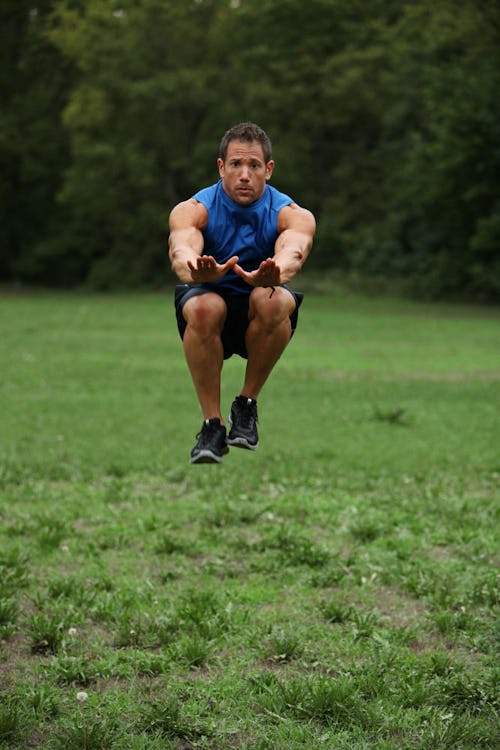

You may consider doing a yin yoga session on your rest days. Yin yoga may be the perfect complement to a plyometric workout since yin yoga benefits the connective tissue and joints.
#Tuck jumps increase vertical full
Always do them when you’re fresh and full of energy.ĭo a 10-minute warmup before doing plyometrics to loosen and warm up your body. Using correct alignment and form can help prevent strain and injury. It’s important that you do the exercises properly in order to gain the benefits and prevent injury. Plyometrics can be used by nonathletes to promote general fitness, which can help you in your daily activities. Connective tissue is strengthened and you can increase resiliency and elasticity. They help tone the body by engaging lots of different muscles. Many plyometric exercises are full-body exercises. Core, lower back, and leg strength are also important. Make sure you have the strength, flexibility, and mobility to perform these exercises, especially in your ankles, knees, and hips.

At the same time, doing plyometric exercises correctly has been shown to help prevent injury. While this is good for increasing force, you must use caution since it can increase stress and injury. In addition, plyometric exercises rapidly stretch your muscles, allowing you to move more efficiently.

They also boost your stamina and metabolism. Plyometrics tone the entire body, burn calories, and improve cardiovascular health. These combined benefits allow your muscles to work more quickly and efficiently. This provides excellent results in strengthening muscles while improving agility, stability, and balance.

In what’s known as the stretch-shortening cycle, concentric contractions (shortening the muscles) are followed by eccentric contractions (stretching the muscles). They improve performance in any sport that involves running, jumping, or kicking. Plyometric training increases muscle strength, which allows you to run faster, jump higher, and change direction quickly. Since they require little to no equipment, they can be done anytime, anywhere. Work with a spotter and keep the number of repetitions small, such as five at at time, to avoid getting dizzy if you're putting your head underwater.There are many benefits to doing plyometric exercises. Push your entire body up out of the water to build powerful muscles throughout your legs. For advanced pool jumpers, water chest deep gives you strong resistance and more cushioning on the landing, but you must hold your breath as you dip under the water's surface. For beginners, head to shallower water, perhaps hip deep, so you don't have as much resistance when you jump and you don't worry about going underwater when you squat. Squat jumps are an excellent way to increase your vertical jump, but you should pick a water depth that matches your strength and swimming skill. According to Ohio State University, performing plyometrics exercises in a pool puts less stress on your muscles and joints, helping you reach your jumping goals with less chance of injury. Using these exercises in a pool means additional resistance, which makes your workout more effective, but it also reduces the impact as you land. Plyometrics uses fast, powerful movements to develop stronger muscles.


 0 kommentar(er)
0 kommentar(er)
